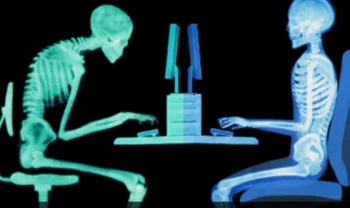
A lot of people are concerned about the safety of upper cervical adjustment when it comes to the neck. They may have seen aggressive manipulations being performed on YouTube, heard stories of adverse reactions to neck adjustments, or even been told by another healthcare provider that they should not have their neck adjusted. It is important to understand the facts surrounding the issue so that individuals are making informed decisions about whether they should receive an adjustment.
Blair Upper Cervical Adjustment – What it IS and What it ISN’T
To separate fact from myth regarding the safety of an upper cervical adjustment, we first must understand the differences between a conventional manipulation and a cervical adjustment. When most people think about a neck adjustment, they conjure up the image of a forceful twisting of the neck followed by a loud crack or pop. While this is certainly true of conventional spinal manipulation, a Blair Upper Cervical adjustment is performed very differently.
Conventional spinal manipulation is performed by most chiropractors, some Osteopathic Doctors (DO), and many physical therapists. This type of treatment is a non-specific mobilization used to relieve muscle spasms, improve movement, and temporarily reduce or eliminate pain. An adjustment is NOT performed in this manner, and as such comparing it’s effectiveness to a conventional manipulation is simply an “apples to oranges” comparison.
A Blair Upper Cervical Adjustment differs in the following ways, which will be explained in more detail:
- Image-guided – based on measurements, not by feel
- Neutral position – reducing stress to the spine rather than adding it
- Non-manipulative – no twisting, cracking, or popping
Image-Guided - A Blair cervical adjustment is only performed when necessary and is calculated based on structural imaging. In the same way that no two people have the same face, no two people have the same spinal structure. This means that the orientation and movement on one person’s neck are much different than the next person’s and should be accounted for with an upper cervical adjustment. Structural imaging such as digital x-rays, MRI, or CBCT provides an accurate depiction of spinal structure in order to eliminate the “guesswork” associated with conventional manipulation.
Neutral position – An upper cervical adjustment does not produce a pop or crack in the neck for the simple reason that it does not forcefully jar the joints of the neck. An upper cervical adjustment is performed with the spine in its normal and neutral orientation while the patient lays comfortably on their side.
Non-manipulative - The twisting associated with conventional spinal manipulation is the predominant risk when it comes to the upper neck. Much of the peer-reviewed literature that assesses injuries following neck manipulation cites the twisting of the head as a primary mechanism of injury. The goal of an adjustment is always to correct one problem without causing another, and every caution is taken to protect the sensitive nerves, blood vessels, and tissues of the upper neck.
What do you feel when you get an upper cervical adjustment?
Since an upper cervical adjustment is performed in the manner described above, many patients report that the experience of having an adjustment is very easy and comfortable. In fact, many patients report that all they felt was a light tap. There is no feeling of pop, no cracking sound, and no uncomfortable muscle tightening during the adjustment. Specialized adjusting tables are used to accomplish an upper cervical adjustment, which is another reason why you should seek a qualified professional for cervical adjustments.
What are the risks of upper cervical adjustments?
There are very few risks associated with upper cervical adjustments. It is very rare for a patient to experience an adverse reaction to an upper cervical adjustment. The most commonly reported side effect of an adjustment is mild muscle soreness. Upper cervical doctors are some of the most conservative in the chiropractic profession, which means that they only adjust the upper neck when it is necessary.
A primary goal of upper cervical care is to perform an adjustment that will last for as long as possible, rather than having conventional manipulation performed frequently. In this way, the goal of an upper cervical adjustment is the get the best possible result with the fewest amount of adjustments possible. This leads to improved structural stability, decreased healthcare costs, and continued progress without depending on frequent chiropractic adjustments.
My Doctor says that neck adjustments can cause strokes, is that true?
Currently, there are no scientific studies that conclude that an upper cervical adjustment causes a stroke. There have been events reported where an aggressive spinal manipulation was performed on a patient with a stroke in progress, leading to some misconceptions surrounding adjustments. Most healthcare professionals are familiar with conventional spinal manipulation and have less experience working with qualified upper cervical chiropractors.
Upper cervical adjustments are a tool to be used effectively for the right job. While certainly not a “cure-all” or “one-size-fits-all” treatment, many patients who have struggled to find lasting relief are potential candidates for upper cervical care. A good upper cervical chiropractor will help to identify risk factors for upper neck displacements, perform thorough testing to identify and measure these displacements and perform upper cervical adjustments only when necessary.







Leave a comment